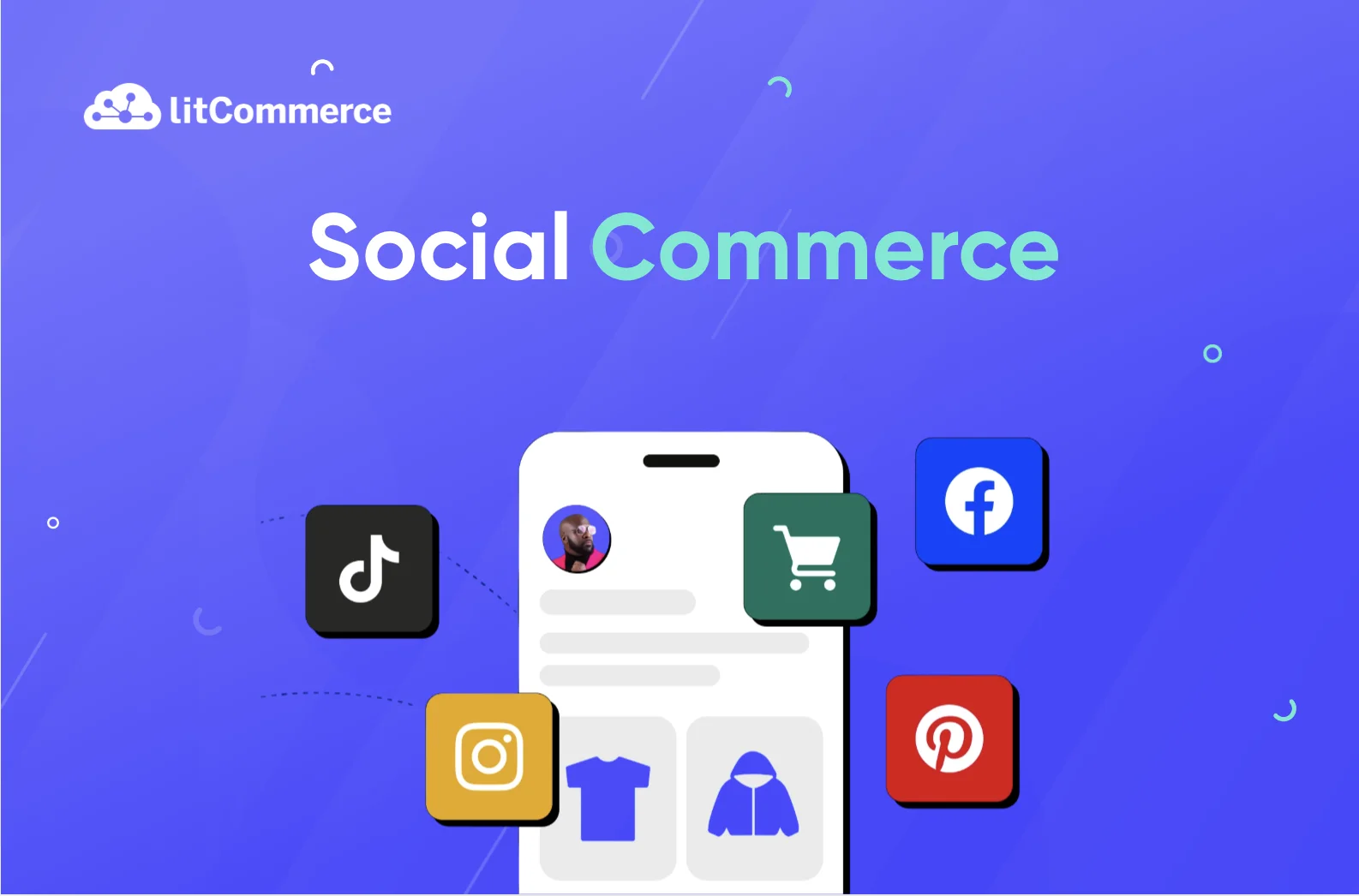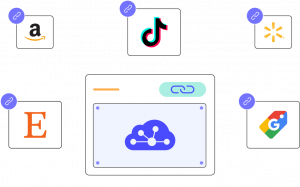Shopping is no longer limited to online stores and marketplaces. Today, it happens right where people spend most of their time: on social media. This is the foundation of social commerce.
In this guide, we’ll break down the basics of social commerce, why it matters for your business, and which platforms are driving the trend.
Key takeaways
- Social commerce is the integration of eCommerce into social media platforms, allowing users to discover, browse, and purchase products directly within social apps.
- eCommerce covers the broader world of buying and selling online; social commerce narrows in on sales that happen directly within social media platforms.
- Social media allows brands to interact with customers directly through comments, direct messages, live chats, and interactive shopping events.
- Social platforms are also powered by algorithms that tailor content to individual users based on their behavior and interests.
What is Social Commerce?
Social commerce is the integration of eCommerce into social media platforms, allowing users to discover, browse, and purchase products directly within social apps.
Customers can shop directly on social networks like Facebook, Instagram, TikTok, and Pinterest, without ever leaving the platform. These channels are also the top social commerce platforms used by shoppers today. For example:
- On Instagram, users can shop through shoppable posts or check out directly.
- On Facebook, businesses can create a Shop where customers browse and buy.
- On TikTok, brands use product links and live shopping features to drive sales
Social commerce enables businesses to connect emotionally with customers. It helps drive higher sales conversions and reach a broad, targeted market. At the same time, it provides customers with easy access to product information, reviews, and support.
Social Commerce vs. eCommerce Comparison
Social commerce and eCommerce may sound similar, but they’re not the same. To help you get a better understanding of the social commerce definition and eCommerce, here’s the breakdown of the comparison:
Aspect | Social Commerce | eCommerce |
Platform | Occurs within social media platforms (e.g., Instagram, Facebook, TikTok) using built-in social shopping features | Takes place on dedicated online stores or eCommerce websites, marketplaces like Amazon |
Customer interaction | High engagement with community building, user-generated content, social proof, and brand storytelling | Interaction is mostly through customer service and website navigation |
Sales process | Streamlined, faster purchases directly on social media with shoppable posts and in-app checkout | Multi-step process often involving redirects to different pages for checkout |
Content | Uses authentic and interactive content like user-generated posts, videos, and influencer collaborations | Relies on branded, pre-produced content with product descriptions and static images |
Product discovery | Frictionless, based on social interactions, recommendations, and shoppable galleries | Requires searching or browsing product lists on the website |
Trust & authenticity | Builds trust through social proof like testimonials, authentic visuals, and interactive social content | Trust is built primarily through product info, branded imagery, and customer reviews |
Control of content | Less control since it heavily depends on user-generated content shared on social platforms | Full control over the branded content presented on the platform |
User experience | Personalized via social algorithms, engaging and visually immersive | Traditional shopping experience with detailed product lists and checkout |
Scalability | Can scale globally via social networks and influencer marketing | Scalable via web presence and digital marketing strategies |
Key takeaways
- eCommerce covers the broader world of buying and selling online; social commerce narrows in on sales that happen directly within social media platforms.
- Social commerce uses social media’s interactive and community-driven features to let people shop directly on platforms like Instagram or TikTok. Traditional eCommerce, on the other hand, happens on dedicated websites with product catalogs and checkout pages.
What Are the Benefits of Using Social Commerce for Brand?
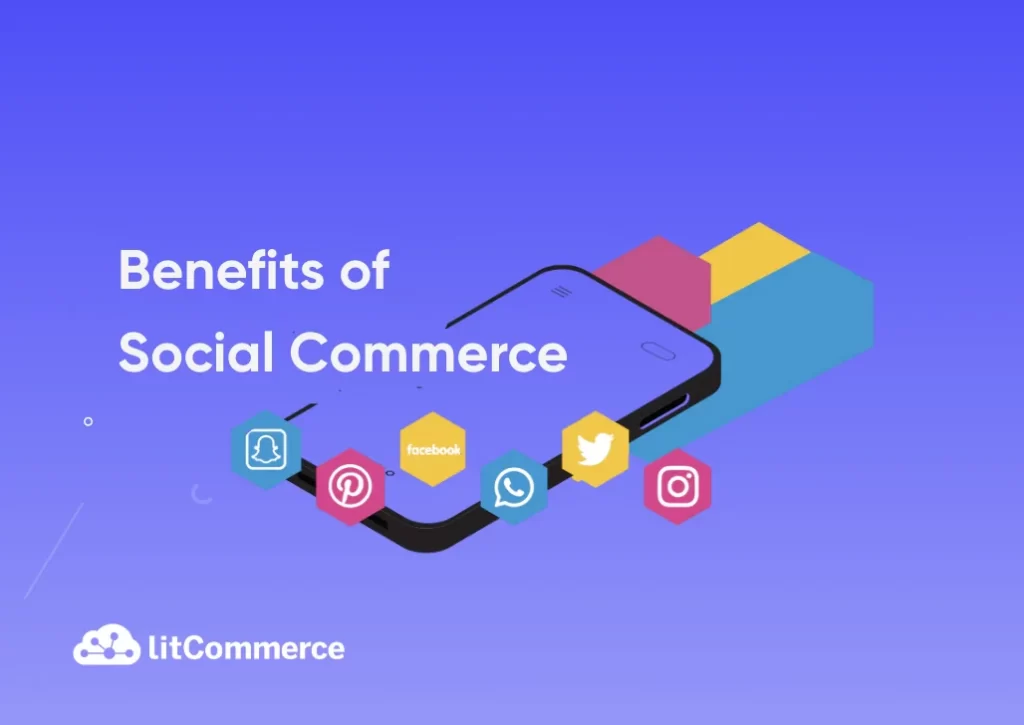
Wondering why so many sellers are turning to social commerce? Let’s break it down:
Stronger brand awareness and visibility
One of the biggest advantages of social commerce is its power to increase brand awareness by reaching a massive audience.
Over 95% of the world’s internet users, regardless of age, now use social media each month, providing a vast potential audience. That means brands can tap into an audience far larger than traditional marketing channels can offer.
Social platforms are also powered by algorithms that tailor content to individual users based on their behavior and interests. This makes product discovery feel natural and seamless, placing your brand in front of people who are most likely to engage.
By showcasing products through engaging content, influencer collaborations, and shoppable posts, brands can increase their visibility both organically and through targeted ads. As a result, brands become more recognizable and memorable to consumers.
Seamless shopping experience
Traditional online shopping can feel long and complicated. Social commerce eliminates much of that friction. Now, consumers can browse, discover, and buy products directly within their favorite social apps, whether that’s TikTok, Instagram, or Facebook.
This simplified journey shortens the path to purchase and significantly increases conversion rates. By integrating product discovery, social proof, and checkout all within one platform, social commerce makes buying easily, encourages impulse purchases, and keeps customers engaged without leaving their favorite apps
By reducing barriers, brands make it easy for customers to act on impulse and complete purchases instantly, without leaving the platform.
Stronger customer connections
Additionally, platforms like Instagram, TikTok, and Facebook allow brands to interact with customers directly through comments, direct messages, live chats, and interactive shopping events.
You can directly send the email discount codes, ask for customer reviews, and more. These personal interactions help brands build trust, loyalty, and a sense of community around their products.
It’s also important to note that 73% of customers say they’ll buy from a competitor if a brand doesn’t respond quickly. As a seller, being present and responsive on social media isn’t optional. It’s a must if you want to keep customers loyal to your store.
Increased sales and revenue
By 2025, social commerce is expected to drive over 17% of global online sales, showing just how quickly it’s becoming a primary shopping channel. That means millions of buyers are no longer just scrolling through social media; they’re actively buying there.
For sellers, this opens up a huge opportunity to grow revenue without needing a separate eCommerce site or complex checkout process.
Social platforms make it easy to sell with built-in features like product tags, shoppable posts, live shopping streams, creator-driven affiliate programs, and integrated checkout. These tools allow you to meet buyers exactly where they’re already spending time.
Even better, social commerce encourages impulse buying. When shoppers see an engaging post, influencer recommendation, or live demo, they can purchase instantly without leaving the app.
Turn Impression into Sales with LitCommerce!
Easily create and customize your product feeds in multiple formats, then publish them to 300+ channels like Google Shopping, Facebook, and TikTok, getting more sales.
Better marketing targeting and insights
Unlike traditional advertising, social platforms, however, let you target the exact buyers who are most likely to purchase from you. You can refine your audience by demographics such as age and location, or get even more precise with interests, behaviors, and past shopping activity.
Beyond targeting, platforms like Facebook, TikTok, Instagram, and Pinterest give you access to real-time analytics dashboards. Some essential components of such dashboards are:
- Followers and follower growth
- Engagement metrics (likes, comments, shares, clicks)
- Reach and impressions
- Video performance metrics like average watch time
- Audience insights (age, location, gender, behavior)
These insights help you adjust your social commerce strategy, improve your listings, and grow your store faster.
Want to start using social media to get more sales. Check out this free guide: The Ultimate 2025 Guide to Social Media for Small Business Growth
Best Social Commerce Platforms for Selling Online
Choosing the right social media commerce platform is key to reaching more buyers and driving sales. Each platform offers unique features, audiences, and selling tools that can help you grow your online business.
Here are some best social commerce platforms examples based on their popularity, selling features, and ability to connect your brand with engaged shoppers:
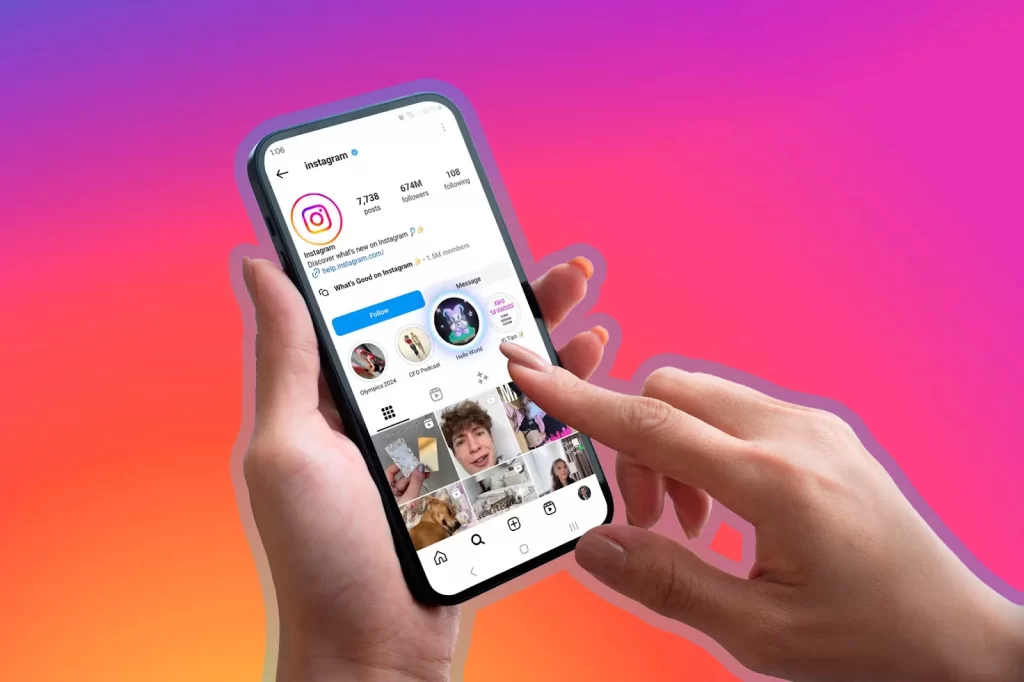
Instagram is one of the leading social media platforms, and it is known for its strong visual focus and highly engaged user base.
As a brand, you will find Instagram powerful for social commerce because it is equipped with features like
- Instagram Shopping
- Shoppable posts
- Stories shopping stickers
- In-app checkout system.
With these tools, you are able to set up Instagram Shop, tag products directly in your posts and stories on Instagram, so your audience is guided into a seamless shopping experience without ever leaving the app.
Since Instagram is integrated with Facebook’s commerce infrastructure, you are supported with robust targeting and advertising options. This allows businesses to deliver personalized product recommendations and highly targeted ads to potential customers.
Instagram also supports influencer-driven sales and affiliate marketing, making it easy for creators to promote products and earn commissions.
Best for businesses aiming to leverage influencer marketing and visually-driven storytelling to boost brand awareness and conversions.
TikTok
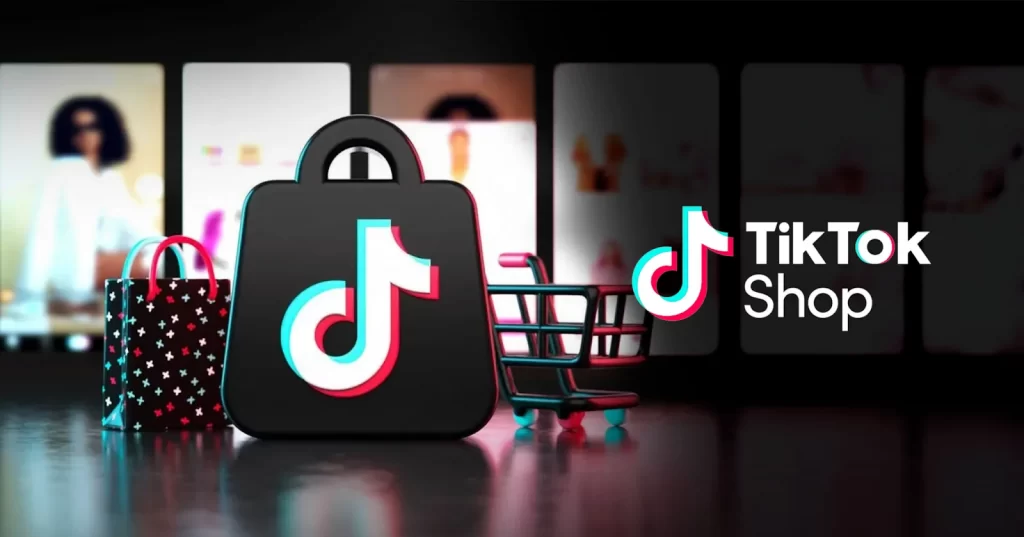
TikTok is one of the most powerful platforms for social commerce, and it is where you can merge entertainment with seamless shopping. This platform uses the viral short-video format to engage younger audiences.
43% of Gen Z begin their product searches on TikTok, which now surpasses traditional platforms like Google and Amazon for product discovery.
The platform also offers a full range of shopping features all inside the app, where users can discover and purchase trending products seamlessly, such as:
- Shoppable videos
- Live shopping
- Creator-driven affiliate programs
- Integrated checkout
Because TikTok is built on a content-first approach, you can take advantage of viral videos and community trust to encourage impulse purchases, especially among Gen Z and millennial audiences.
Since the platform is designed to keep users engaged while enabling instant buying, you will see lower cart abandonment and higher sales conversions.
Best for brands targeting younger, trend-focused consumers and those with products that can gain traction through viral content

Pinterest is a visual discovery engine, and it is the place where users go to seek inspiration and ideas.
As a brand, you can use shoppable Pins and product catalogs that link directly to your eCommerce site. This means you are able to reach consumers earlier in their buying journey while they are still exploring ideas.
The Shop Tab on business profiles functions as a mini storefront, where users can browse curated collections, seasonal best-sellers, and expert picks. Besides, Pinterest’s Shopping Ads help brands promote products through targeted advertisements designed to drive sales by reaching users based on their interests and behavior.
The platform also features advanced visual search capabilities through its Lens tool, allowing users to find products by snapping photos of items they want to purchase or find similar inspirations.
Pinterest also provides personalization and audience targeting through its algorithm, so you can showcase your products to highly relevant users who are actively seeking new products.
Best for brands in home décor, DIY, fashion, wedding planning, and other niches relying heavily on aspirational and inspirational visuals.
Snapchat
Snapchat is popular with younger audiences, and it is unique because it offers augmented reality (AR) shopping experiences.
With AR try-ons and interactive ads, brands can create AR lenses allowing users to virtually try on products like clothing and makeup or visualize home décor, making shopping more realistic and fun.
Snapchat integrates product catalogs with AR assets so users can shop directly from the AR experience, combining entertainment and commerce seamlessly.
By using the Discover section and shoppable Snap Ads, you are able to engage users with immersive content that drives direct purchases.
Because Snapchat content is ephemeral and time-sensitive, you can create urgency and exclusivity, making it easier to appeal to impulse buyers and stand out with innovative commerce experiences.
Best for brands targeting younger generations like Gen Z and millennials who favor immersive, interactive experiences.
Youtube

YouTube is the world’s largest video platform, and it is becoming a strong hub for social commerce.
In February 2025, YouTube reached more than 2.5 billion monthly active users. By selling on YouTube, you can take advantage of product tagging in videos, live-stream shopping events, and channel shelves for product listings.
With long-form content, you are able to deliver in-depth product demonstrations, tutorials, and influencer reviews, which help you build trust and drive informed purchases.
Because YouTube has extensive reach and high engagement, it is ideal if you want to tell stories around your products while enabling direct shopping.
Best for brands requiring in-depth storytelling, tutorials, and demonstrations, such as tech gadgets, beauty products, educational tools, and lifestyle brands.
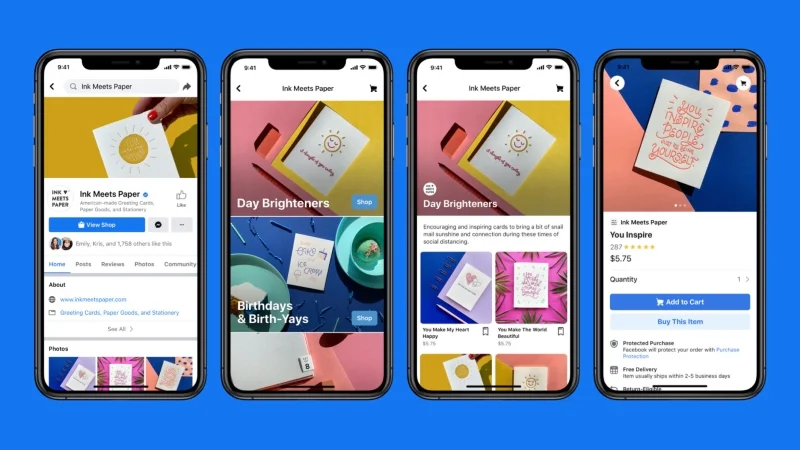
Facebook is the most popular social network worldwide, with over 3 billion users and one of the most established social commerce platforms. It gives you access to a mature ecosystem with Facebook Shops, Marketplace, and shoppable posts.
Furthermore, Facebook’s advanced advertising and targeting tools, backed by its rich user data, help brands deliver personalized ads to highly specific audiences, improving conversion rates.
Additionally, robust analytics and attribution tools provide insights to optimize ad spend and retarget interested shoppers effectively, making Facebook a comprehensive social commerce solution.
Since Facebook has a broad user base across all demographics, and it is integrated with Instagram Commerce, you can rely on it as a comprehensive platform to maximize your reach and boost sales.
Best for businesses aiming to reach a wide demographic with versatile advertising options and strong social commerce integration.
Most Recent Social Commerce Statistics and Trends
Brands shouldn’t overlook social media commerce. More and more people are finding, learning about, and buying products directly on social media.
Here are some up-to-date statistics and emerging social commerce trends. These cover both global outlooks and more specific regional data.
- The global social commerce market size was estimated at USD 1.16 trillion in 2024 and is projected to reach USD 17.83 trillion by 2033
- Social media reaches 93.8 % of internet users worldwide every month, regardless of age.
- Asia Pacific social media commerce dominated the global market with the largest revenue share of 71.6% in 2024.
- 82% of consumers use social media for product discovery.
- 50% of shoppers have purchased via social media.
- 90% people in Thailand have purchased on social media.
- Gen Z and Millennials prefer interactive and frictionless shopping, placing high trust in peer recommendations and influencer endorsements.
- Platforms like TikTok, Instagram, Facebook, and Pinterest continue to expand shoppable features, offering seamless in-app checkout.
Social commerce is no longer a side channel; it’s becoming central to how people shop online. To stay ahead, you need to tap into social commerce marketing and start building your presence where your customers already spend their time.
Successful Social Commerce Examples
100 PURE
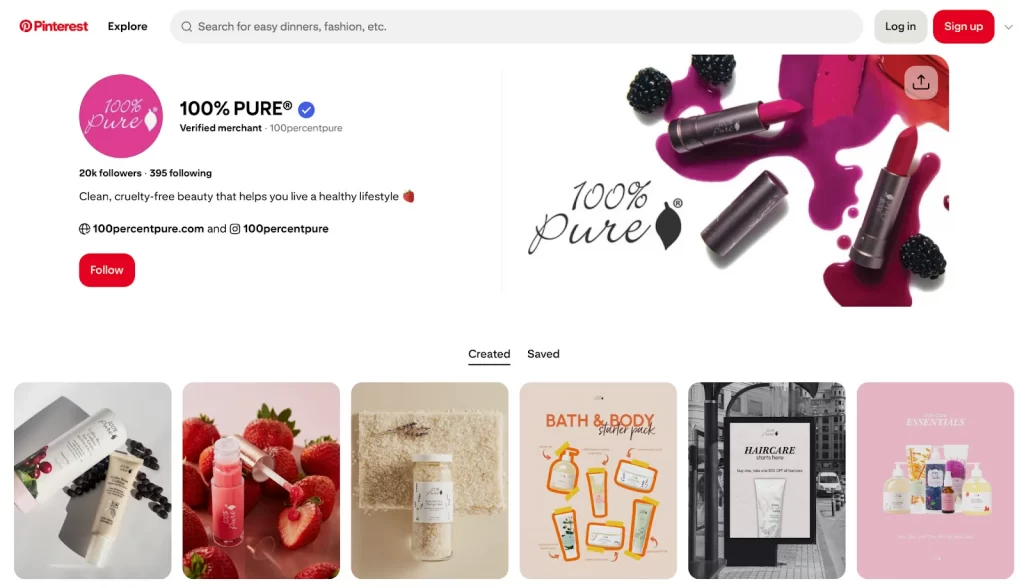
100% PURE is a natural cosmetics brand that grew from a California farm into a global retailer. They use Pinterest as a storefront with hundreds of product pins and run ads to reach beauty shoppers.
On top of that, 100% PURE leverages Pinterest ads to show promoted pins to users browsing through other beauty brands and cosmetics-focused pins. Additionally, they have their Instagram account with 273,000 followers for buyers to discover and buy products.
HiSmile
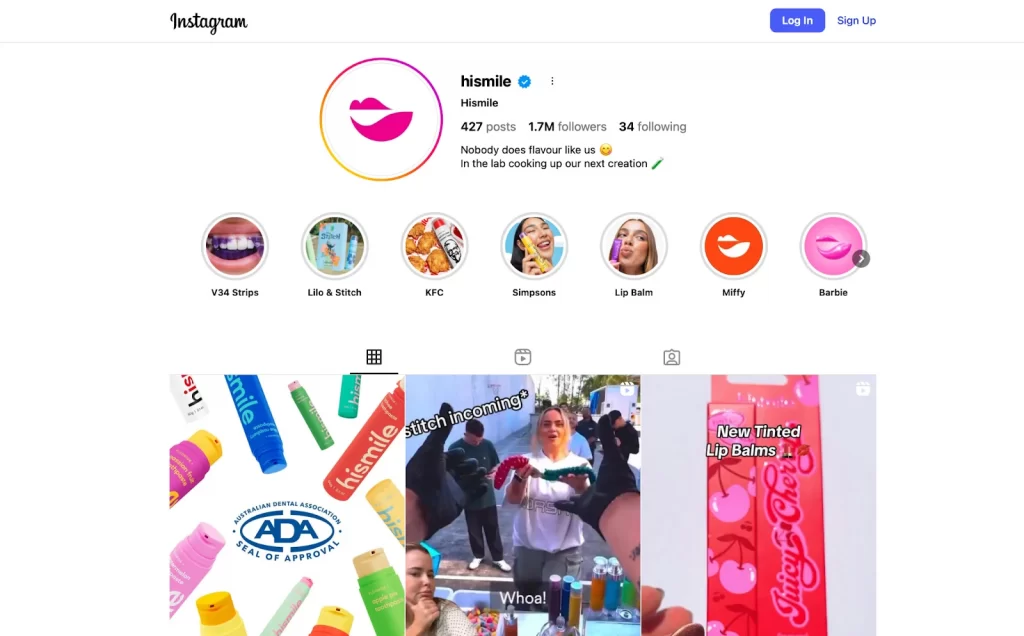
HiSmile, an Australian teeth-whitening brand, has become a strong example of social media commerce success. By blending influencer marketing with platform-native features on TikTok, Instagram, and Facebook, the brand turned authentic content into sales.
Campaigns utilizing both macro and micro influencers increased click-through rates by 26%, while targeting young men through Instagram Stories yielded a 5× return on ad spend and expanded the male customer base by 90%.
On TikTok, nearly 40% of site traffic and 93% of new customers during Black Friday came from ads. HiSmile’s strategy shows how authentic, creator-driven content and smart testing can fuel rapid eCommerce growth.
Samsonite
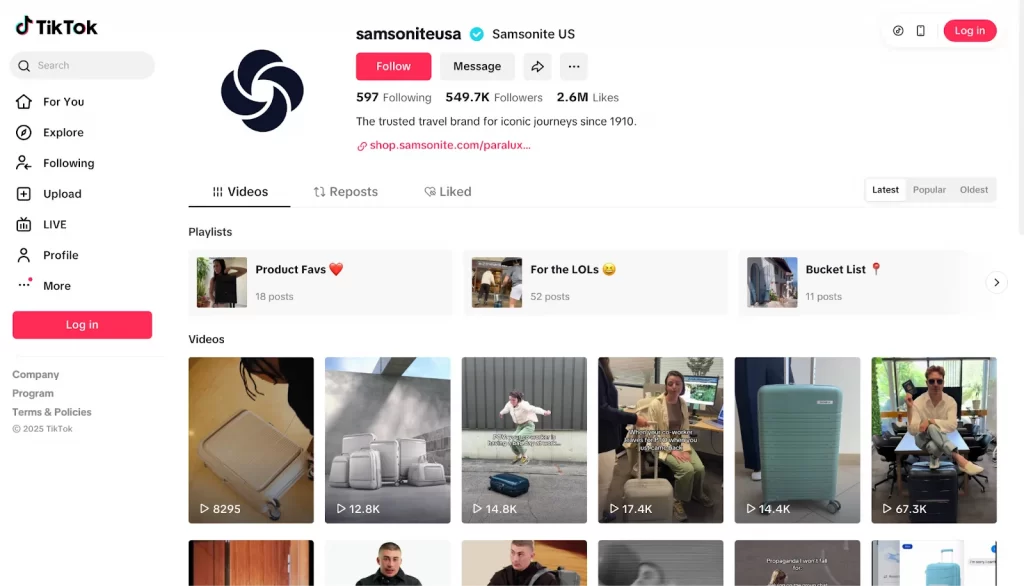
Samsonite, the global luggage leader, executed a novel full-funnel social commerce campaign mainly on TikTok to boost sales across multiple European markets.
They partnered with influencers and used video shopping ads combined with TikTok’s Pixel tracking to optimize ad performance.
The campaign generated significant engagement, such as over 700 add-to-cart actions and an 11% engagement rate, resulting in a strong return on ad spend (ROAS) and surpassing industry benchmarks by lowering cost per impression compared to competitors.
Social Commerce Explained: FAQs
What is the meaning of social commerce?
Social commerce is the integration of eCommerce into social media platforms, allowing users to discover, browse, and purchase products directly within social apps.
Is TikTok a social commerce?
Social commerce is the integration of eCommerce into social media platforms, allowing users to discover, browse, and purchase products directly within social apps.
What is social commerce vs. eCommerce?
eCommerce covers the broader world of buying and selling online; social commerce narrows in on sales that happen directly within social media platforms.
What is an example of social commerce?
An example is HiSmile selling directly on Instagram through shoppable posts, where shoppers can tap a product tag and check out without leaving the app. Another is TikTok Shop, where creators promote products during live streams, and viewers can purchase instantly.
Start Using Social Commerce to Reach More Customers!
Social commerce is no longer optional. It’s where your customers are already spending their time and money.
In this post, we’ve walked you through everything you need to know about social commerce, from definition, how it compares to eCommerce, the benefits for your brand, and the best platforms to sell on, to the latest statistics and top examples.
Start using social commerce today to reach more buyers, shorten the path to purchase, and grow your sales faster.
If you need more latest eCommerce news, explore our Blog for practical guides, strategies, and insights to help you thrive on TikTok and beyond.

